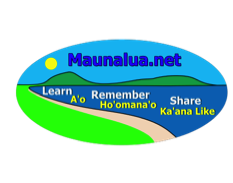Kānewai
Lit., Water of Kāne. (Pukui, Elbert, Moʻokini)
The Sacred Waters of Kānewai, Kuliʻouʻou
"So Kane again struck the earth ..and water gushed forth..and many were the waterholes made by Kane between Hanauma and Leahi (Diamond Head)" (Green and Pukui 1929 p.113). Hawaiians considered fresh water to be a spiritual as well as physical lifegiver and numerous prayers and chants were issued regarding the "Waters of Life of Kane". Kane, the Hawaiian word for male or husband, was the embodiment of male procreative energy in fresh water, flowing on or under the earth in springs, in streams or rivers." (Handy 1940)
Kānewai Fishpond is the last functioning shoreline fishpond in Honolulu (with the exception of Mokauea Island). The fishpond was assessed to have the historic properties meriting a listing on the State Historic Register and satisfied the National Historic Register criteria. It was also listed to be one of Oahu's few remaining royal ponds and one of two remaining loko pu'uone hakuone (Type II) on O'ahu. (Kikuchi & Apple 1975). Today it is commonly referred to by the name Kuliwai.
The pond's history spans almost a thousand years evidenced by numerous associated water gourd and fishing artifacts currently housed in the Bishop Museum (Emory and Sinoto 1961). In 1786 Kānewai Spring was the probable site of the first European visit to O'ahu and the second to Hawai'i. Captain Portlock's ailing crew was supplied with fresh water calabashes from the native canoes. Upon their return in late 1786 they were often visited by the ali'i nui Kahekili, the chief of all the Hawaiian islands except Hawai'i (Kuykendall 1965). After Kahekili's entourage left in their double hulled canoe, the ships were supplied with "fine mullet" probably from one of the nearby fishponds (Beresford 1968:96-99).
Kānewai fishpond is connected to Paikō Lagoon Wildlife Sanctuary by a rock 'auwai and mākāhā. Kānewai's mākāhā was designed as a movable double gate system. This allowed fish to be caught between the gates. Small fish swam freely in and out of the pond while large fish are trapped in the pond. The mākāhā was placed at precise locations where currents occurred. By studying nature, Hawaiians knew that fish would gather in these areas. Using the ebb and flow of the fishpond's water, Hawaiians were able to lure fish near the mākāhā as well as keep the ponds well circulated. Today the pond hosts a variety of species including kākū (barracuda), Samoan crab and "Upside down" jellyfish (Genus Cassiopeia).
To learn more about Kānewai Fishpond, please checkout the Maunalua Fishpond Heritage Center.
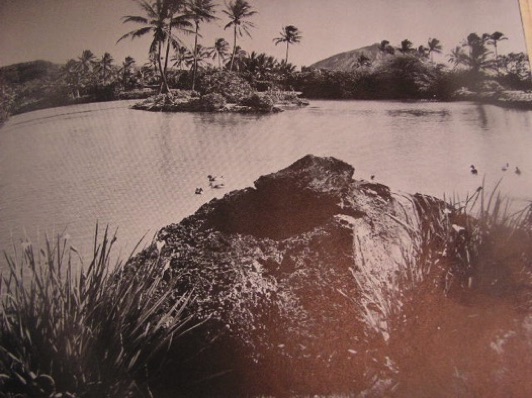
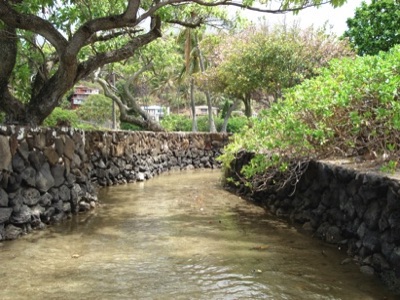
ʻAuwai at Kānewai
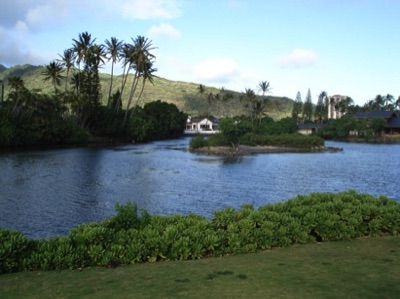
Kānewai
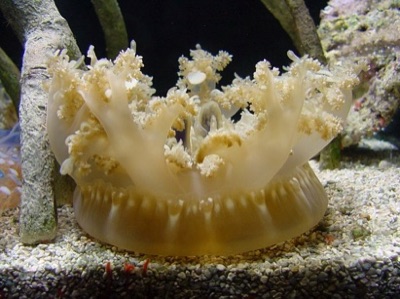
Upside down Jellyfish
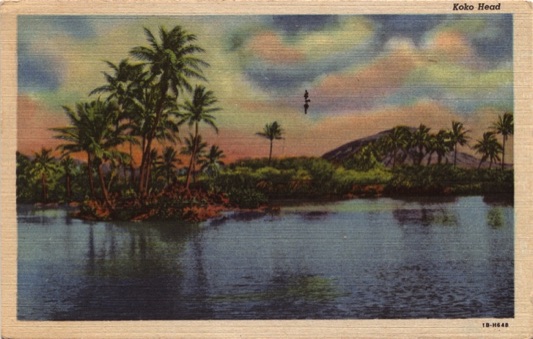
Kānewai Postcard 1950s

